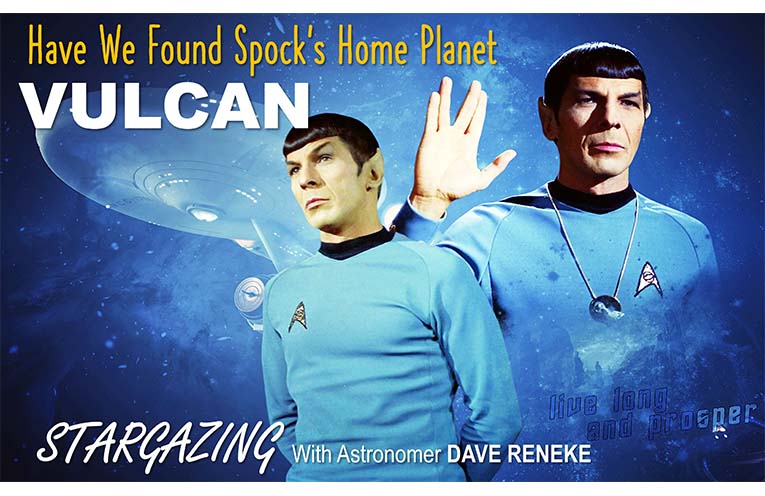
IMAGINE a galaxy far, far away where pointy-eared aliens roam.
For fans of “Star Trek,” that world is none other than Spock’s legendary home, Vulcan.
But did you know that a touch of cosmic coincidence has brought us tantalisingly close to Spock’s fictional home?
Gene Roddenberry, the visionary behind “Star Trek,” once speculated that Vulcan might orbit a star named 40 Eridani A.
Fast forward to today, and his hunch has proven almost eerily accurate!
Using the Hubble Space Telescope, astronomers have discovered a planet orbiting that same star, which is a mere 10.5 light-years away.
To put that in perspective, it’s roughly 100 trillion kilometres – a vast distance, but surprisingly close in cosmic terms.
Epsilon Eridani, a youngish star, sits in the middle of a swirling disc of cosmic debris.
This disc shows us how planets, including our own, come to be.
They form by millions of small bits fusing together to form a much larger round world, just like ours.
It’s a bit like seeing a snapshot of our Solar System’s early days!
Here’s where it gets thrilling: if Epsilon Eridani’s planet has conditions similar to Earth, including the potential for liquid water, it could be a prime candidate for life! The notion that beings on a planet just a stone’s throw away might resemble us, albeit with a more intriguing ear structure, is nothing short of exhilarating.
Astronomers stumbled upon this fabled world ‘ Vulcan’ using the 50-inch telescope atop Mount Lemmon in southern Arizona.
They detected the planet by observing the subtle ‘wobble’ in the planet as it revolved around its parent Sun.
Hey, next time you gaze at the night sky and spot 40 Eridani, imagine this, you could be looking at Spock’s home!
But the “Star Trek” magic doesn’t end there.
In a beautifully poetic twist, the ashes of the show’s creator, Gene Roddenberry, his wife, and other beloved cast members, including James Doohan (Scotty), DeForest Kelley (Bones), and Leonard Nimoy (Spock), were sent on an extraordinary final voyage.
They formed part of a space burial flight by a company called Celestis, aptly named the “Enterprise Flight,” which last year sent their ashes on a cosmic journey to orbit the Sun – a final tribute 330 million kilometres from Earth.
And, how about this!
In a real “beam me up” moment, these remains launched into space aboard a rocket named ‘Vulcan.’
True!
Trekkie fans worldwide requested this homage to their beloved characters, and even Nichelle Nichols, who played the pioneering Lt. Uhura joined her Starfleet comrades for this celestial send-off.
Nichols, who passed away in July 2022, broke barriers as the first Black woman in a leading TV role in the groundbreaking series that first aired in 1966.
The idea of space burials is not entirely new.
In 1999, the ashes of renowned geologist Dr. Eugene Shoemaker were sent to the Moon aboard the Lunar Prospector, a tribute to his immense contributions to planetary science.
This special tribute allowed his spirit to rest on the lunar surface he had devoted his life to studying.
Now, his remains quietly watches over the Moon, a touching symbol of his enduring legacy and humanity’s heartfelt connection to the stars.
As we’ve also now honoured our “Star Trek” heroes in a similar fashion, it’s a poignant reminder of how science fiction and reality can intertwine in the most unexpected and wondrous ways.
So next time you look up at the stars, remember that the adventure of “Star Trek” is not just confined to our screens.
The legacy of Gene Roddenberry and his iconic characters will soon be etched in the cosmic tapestry, reminding us all to boldly go where no one has gone before – both in imagination and in reality.
By Dave RENEKE, Astronomer
